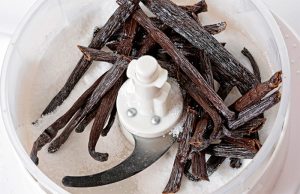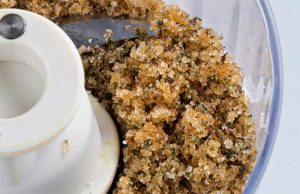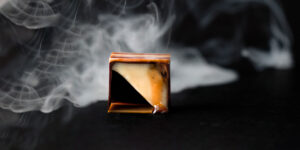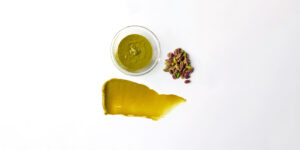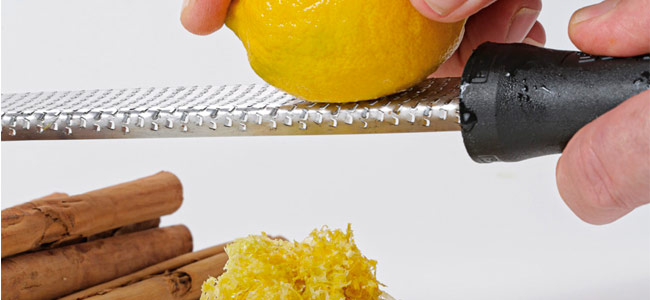
One of the most transversal themes of Jaume Turró‘s book, 30 Indispensable Ice Creams, is the simple flavored sugar technique.
The author applies it to numerous recipes throughout the book such as butter ice cream or biscuit glacé, Catalan cream, mint and chocolate (like an After Eight), vanilla, and the lemon, mojito and mandarin sorbets, among other examples.
Discover 30 Indispensable Ice Creams
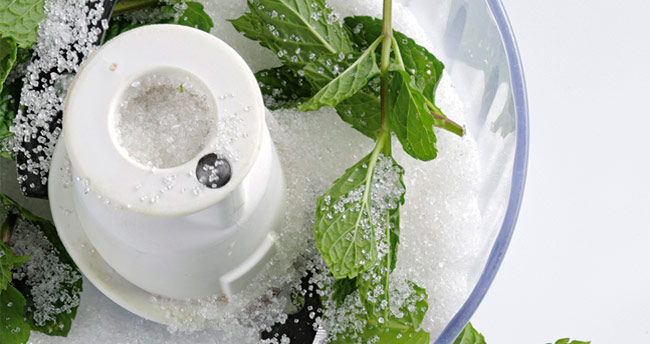
Sucrose
Common sugar, also called white sugar, is the most universal sweetener, used in homes and hostelry. Precisely because of its great use, it serves as a reference value to establish the sweetening power (POD) and anti-freezing (PAC) average of other sugars used in ice cream. The POD will measure the sweetness supplied to the ice cream from each of the sugars, while the PAC is the ability to slow the freezing point of the water inside the mixture. Thus, sucrose has a value of 100 in both its POD and its PAC. In most recipes, sucrose plays a major role in incorporating the neutral into the mix. Mixing in advance helps to integrate it correctly.
However, beyond its known technical function in the process of making ice cream, it is also a very important natural preservative of spices and citrus fruits. By grinding citrus peels and spices with sucrose, we can reserve a fine flavored sucrose powder with multiple applications in ice cream and sorbet for up to a month. In Turró’s and Angelo Corvitto’s ice cream parlors, there is always a useful mise en place, especially in tip work. In all cases, it is a technique that allows re-use of the fruit and spices that are usually discarded and which reinforces the aroma, taste, freshness, and color of the ice cream. In addition, this flavored sucrose is incorporated in a very practical way in the process of making ice cream together with the rest of the sucrose, during the pasteurizing phase.
It is important to maintain accuracy in the percentage assigned in the relationship between the sugar and the other product when being prepared. As recommended by Turró in the book, the most adequate proportion usually lies around 90% sugar and 10% of the spice or citrus peel. It is important to keep in mind that this previously created sucrose should be discounted from the total sucrose that the recipe uses.
It is very important to work on this crushed sugar in advance to have it ready for use. It can be very useful to achieve a clear personality in ice creams which are very commercial and with raw material as expensive as vanilla. In this case, the flavoring of the sucrose allows to take advantage of all the spice, unlike the traditional method of cold or hot infusion, where only the scraped part is used.
The aromatization of yellow creams or ice creams with 4% egg yolk also has an outlet. Through lemon sugars in ice creams as classic as butter, or lemon and orange sugars in specialties as popular as Catalan cream, you can get well-rounded ice creams on the palate, with a different sensory value than usual in this type of ice cream.
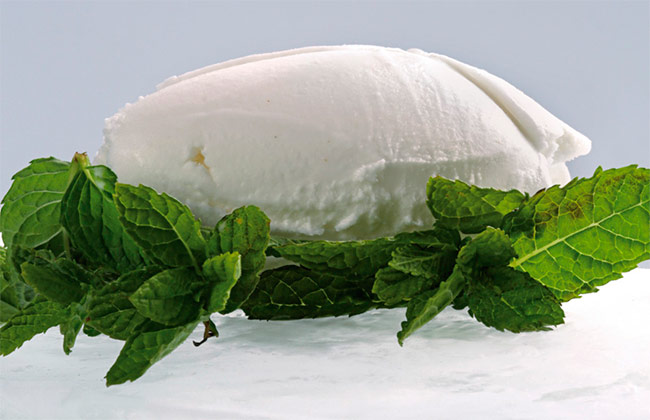
In sorbets, we can find a variety of flavored sugars such as mint in the mojito, and lemon sugar in lemon sorbet, where the taste and acidity are provided by the juice, while the aromatic part is given by the lemon sugar.
In most recipes, the relationship between sucrose and spice or citrus peel can be seen in the following example:
Lemon sugar
- 3 g lemoon peel (10%)
- 27 g sucrose (90%)
Put the sugar and lemon peel in the food processor, being careful not to incorporate the most bitter white part of the citrus, the pith. Grind until powder is very fine sugar. Reserve in a container.
However, in the case of the Catalan cream this proportion can vary so that in tasting, the lemon sugar predominates the orange. For this reason, while the lemon sugar is made with 10% lemon peel and 90% sugar, the orange will be 5% orange peel and 95% sugar.
Recipes from the book, 30 Indispensable Ice Creams, in which this technique is applied:
 Butter or biscuit glacé (page 70)
Butter or biscuit glacé (page 70)- Lemon sorbet (page 74)
- Catalan cream (page 78)
- Mojito sorbet (page 102)
- Mandarin sorbet (page 122)
- Mint and chocolate ice cream (page 134)
- Vanilla (page 138)
